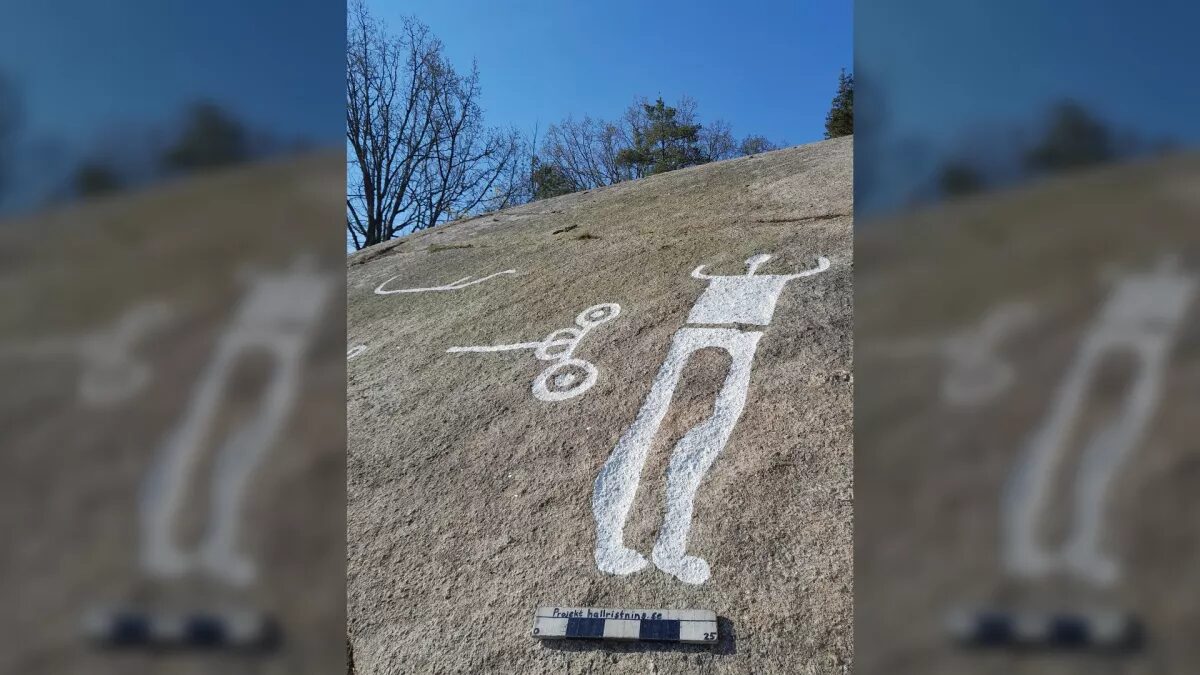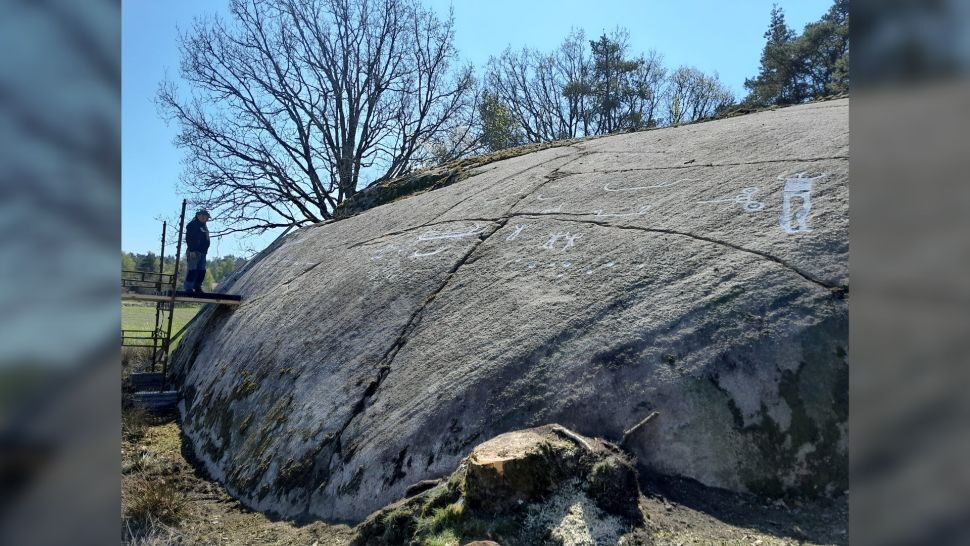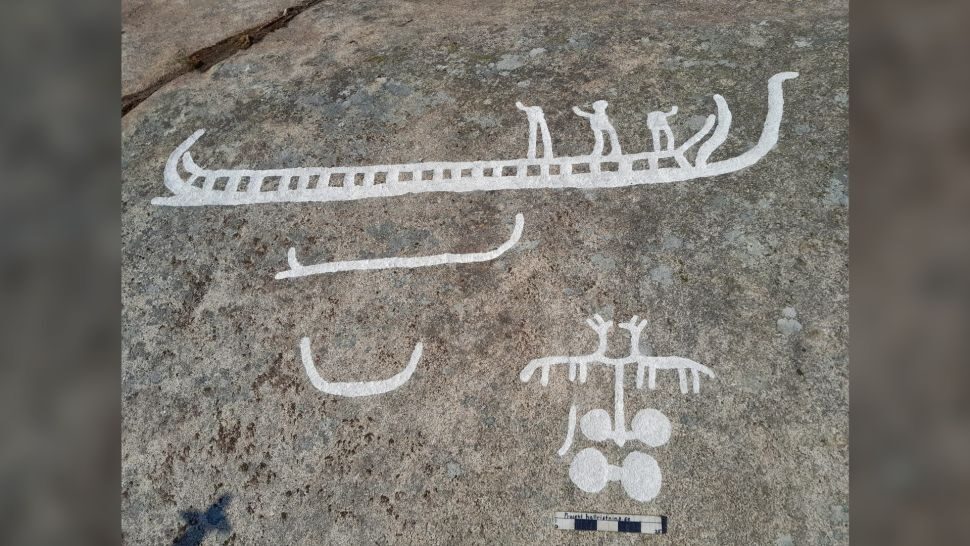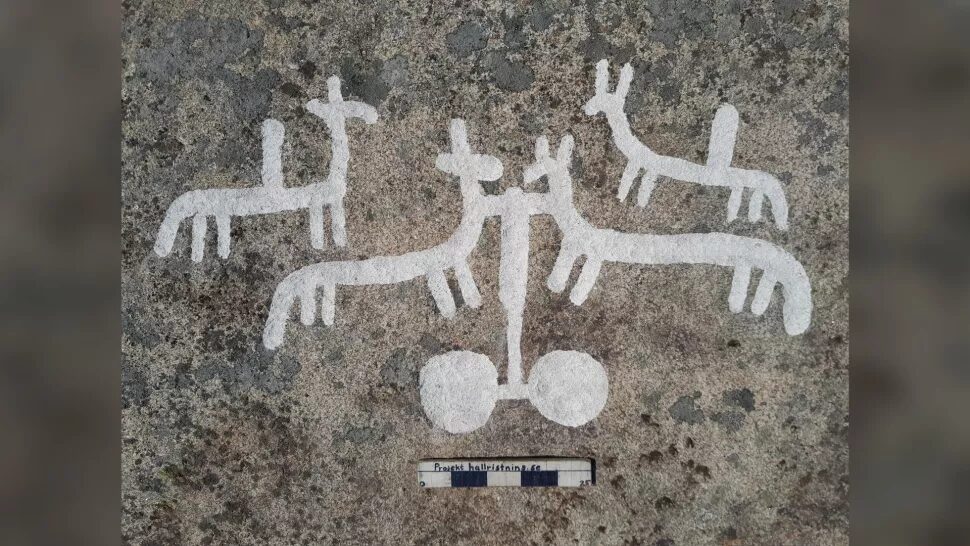About 40 ancient rock carvings have been found on a former rocky island in Sweden.

© Foundation for Documentation of Bohuslän’s Rock CarvingsThe newly found petroglyphs from Sweden include depictions of humans.
On a steep rock face in western Sweden, researchers
uncovered a fascinating find: around 40 petroglyphs — depicting ships, people and animal figures — dating back around 2,700 years.The petroglyphs were carved on a granite rock face that was once part of an island, meaning people would have had to make the carvings while standing on a boat, or from a platform constructed on ice, said Martin Östholm, a project manager with the Foundation for Documentation of Bohuslän's Rock Carvings who is one of the archaeologists who discovered the petroglyphs, told Live Science.

© Foundation for Documentation of Bohuslän’s Rock CarvingsThe petroglyphs are high up on a granite rock face that cannot be climbed, so researchers built a platform to study them.
Bohuslän is already known for its rock carvings, including
Bronze Age art made at Tanum, a United Nations Educational, Scientific and Cultural Organization (UNESCO) site. The team was looking for new petroglyphs in the area when they came across the moss-covered rock face. They noticed some lines on it that appeared to be human made, so they removed the moss, revealing the petroglyphs underneath. The rock face is too steep to stand on, Östholm said, so the team had to stand on a platform to do their archaeological work.

© Foundation for Documentation of Bohuslän’s Rock CarvingsSome of the newly found petroglyphs that were carved around 2,700 years ago.
The petroglyphs include depictions of ships, people and animal figures, including four-legged creatures that may be horses. The biggest one shows a ship that is 13 feet (4 meters) long, Östholm said, noting that many of the petroglyphs are between about 12 and 16 inches (30 to 40 centimeters) in length.
People would have smacked hard stones against the granite rock face to create the petroglyphs, Östholm said. This action exposed a white layer underneath, making the petroglyphs highly visible, even from the mainland or passing ships. It's not certain why people created the carvings, he said, but they may have served to mark ownership.

© Foundation for Documentation of Bohuslän’s Rock CarvingsAnimal figures are depicted in petroglyphs from Sweden.
The meanings of the carvings are also unclear, but an expert who was not involved in the discovery shared a few ideas.
If the petroglyphs were made within a relatively short period of time, they may tell a story, said
James Dodd, a researcher at Aarhus University in Denmark and the Tanums Hällristningsmuseum's
Rock Art Research Centre Underslös in Sweden. Some of the motifs — including chariots, carts and animal figures — were depicted multiple times, he noted.
"On the basis of the repetition of the motifs, it is possible that this collection of figures forms a narrative," Dodd told Live Science in an email. Studies of other petroglyphs in the region have suggested that, in some cases, they may have been used in this way, but the exact meaning in this case is uncertain, he added.
The petroglyphs were discovered in early May, and research is ongoing, Östholm said.







Reader Comments
Furthermore the "scientists" dont think the people that made this had a rope? Because it would be impossible to tie oneself off and anchor the rope opposite? Using a ladder if it were truly unclimbable
Whatever though